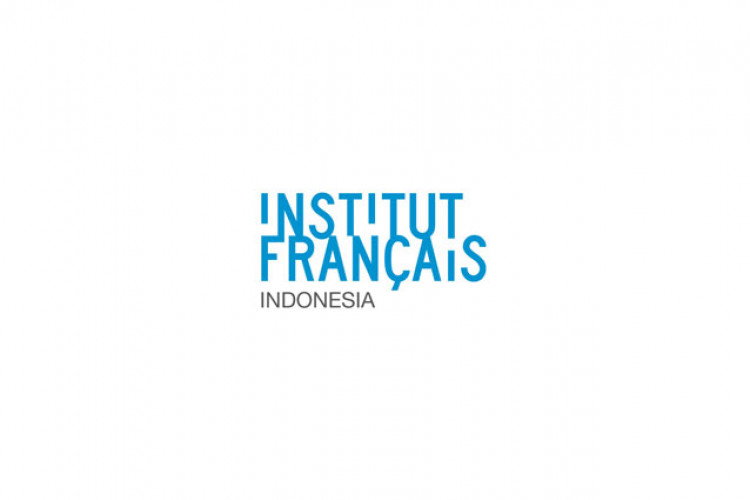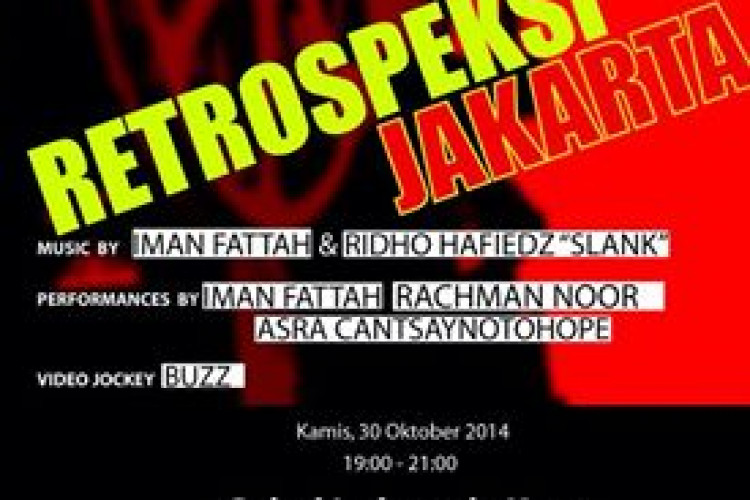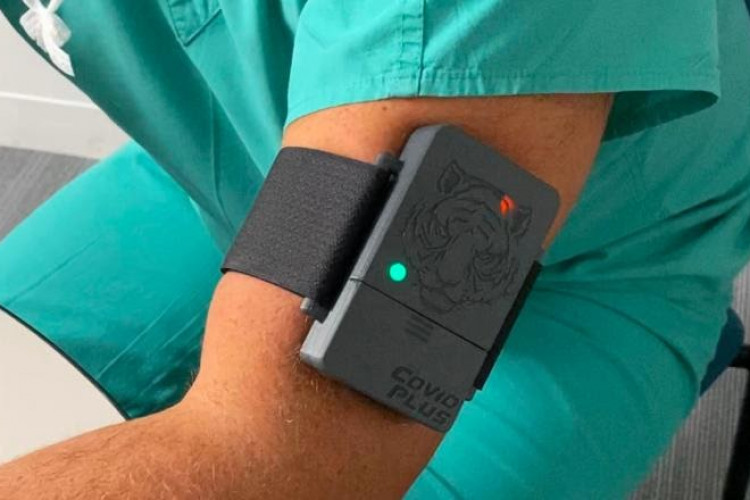Painting Trucks & Signs with Pak Buyung
Mariati Galatio (M) talks to truck painter Pak Buyung (B)
by Ken Jenie
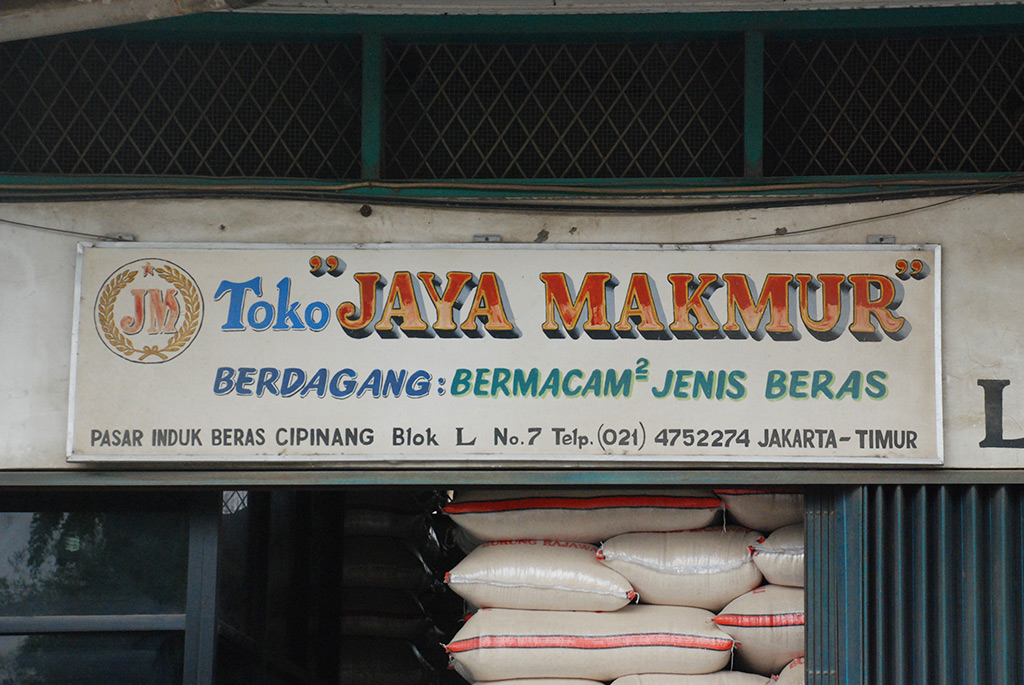
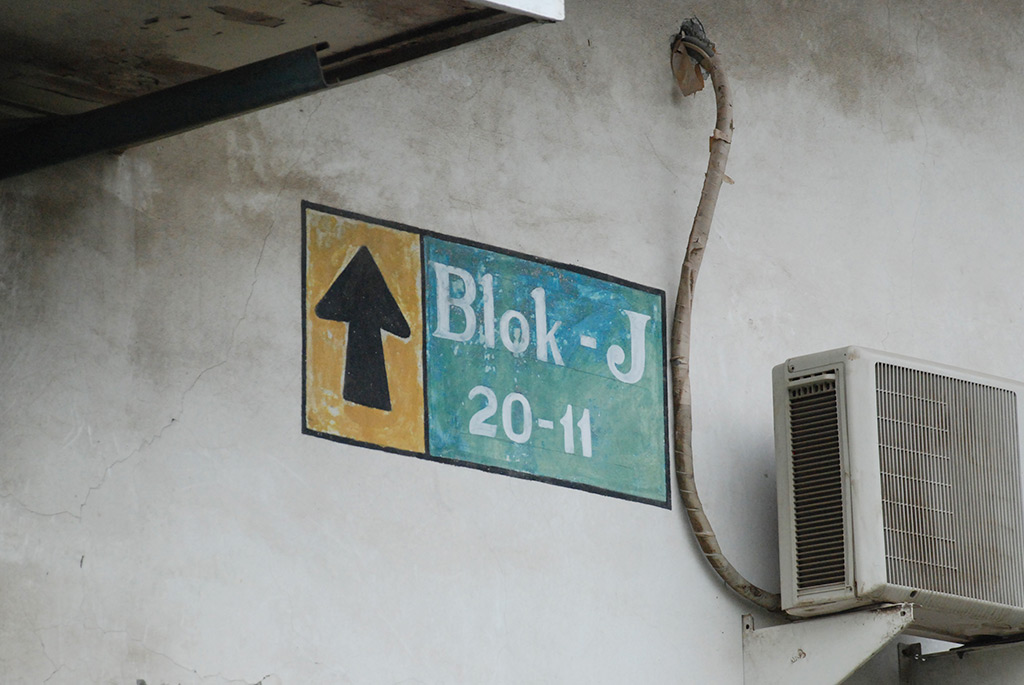
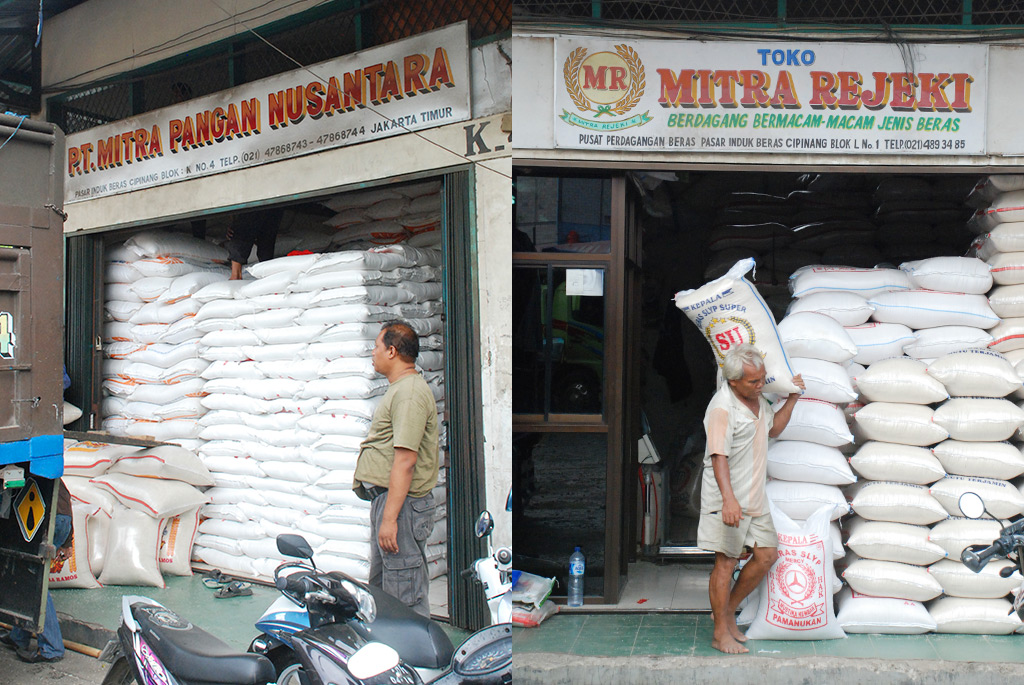

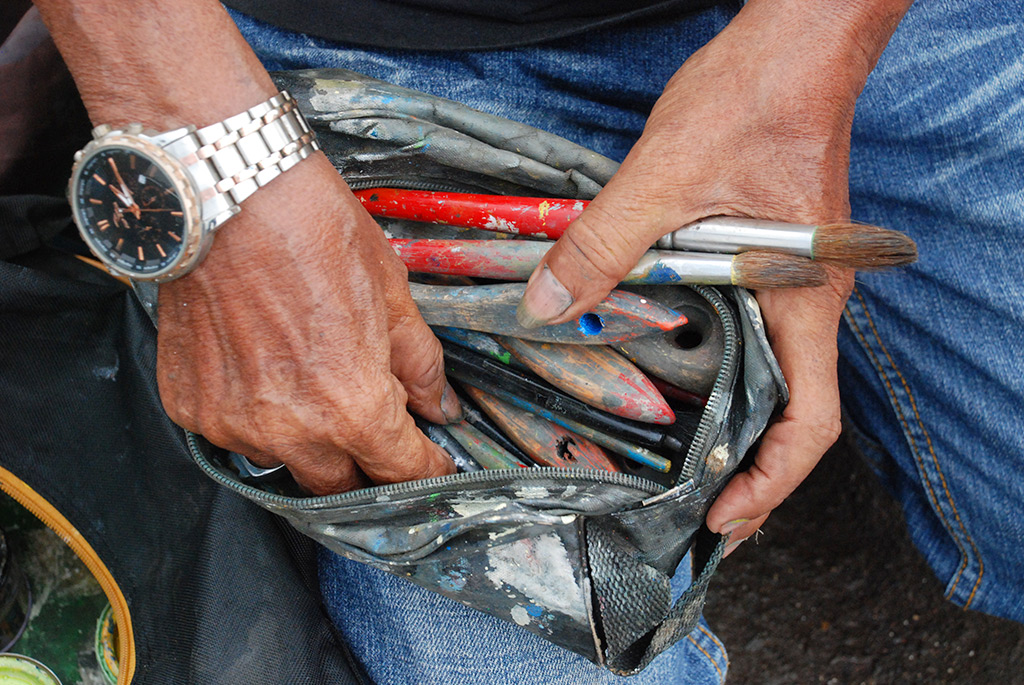
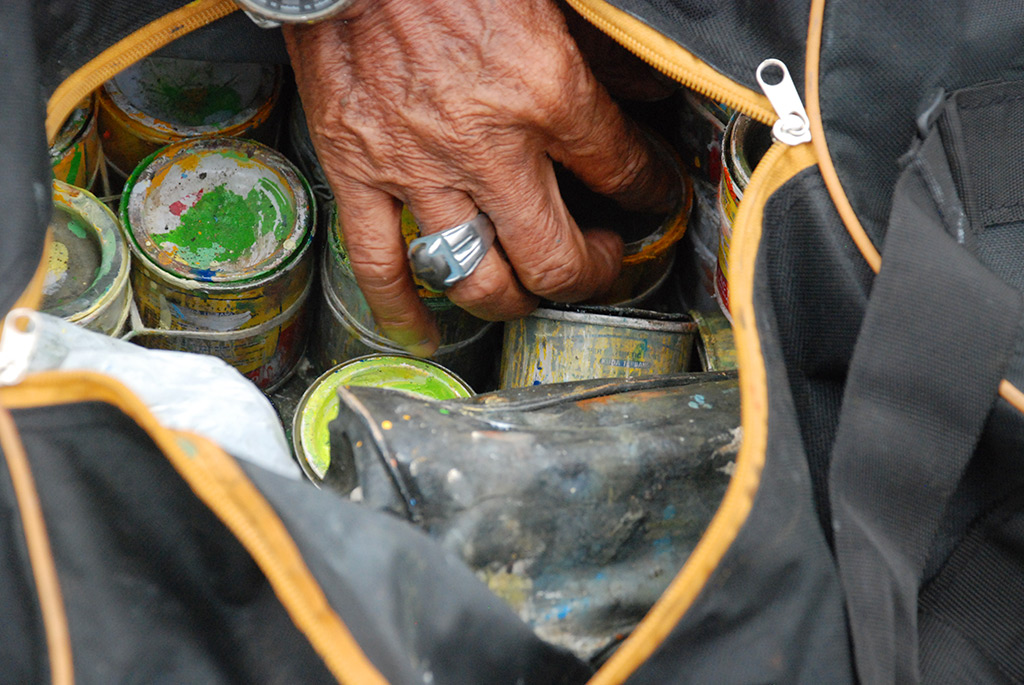
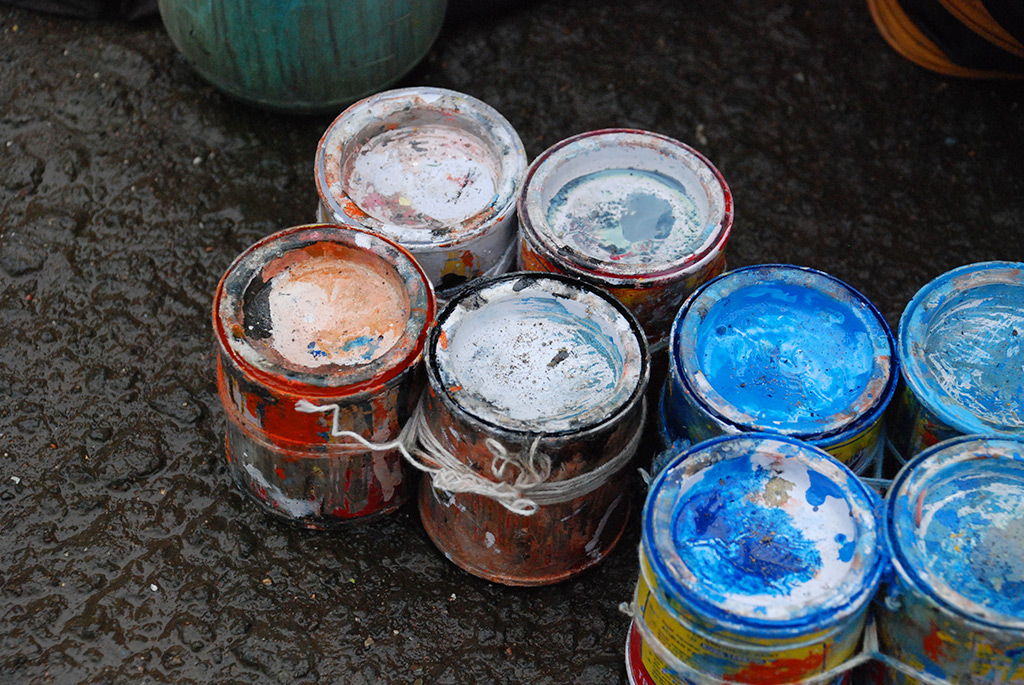
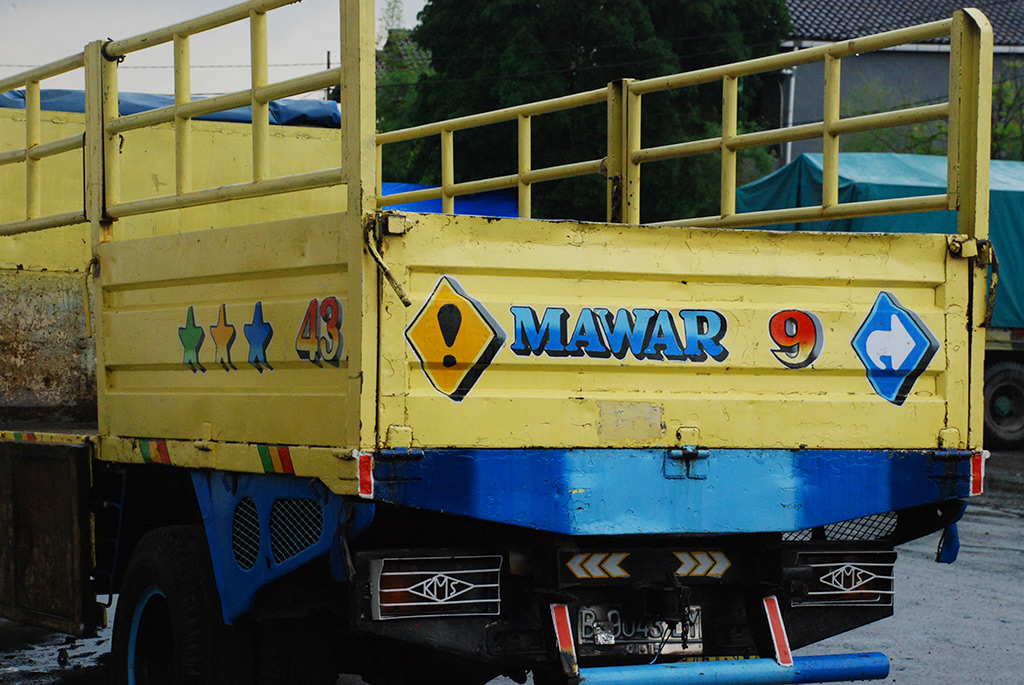
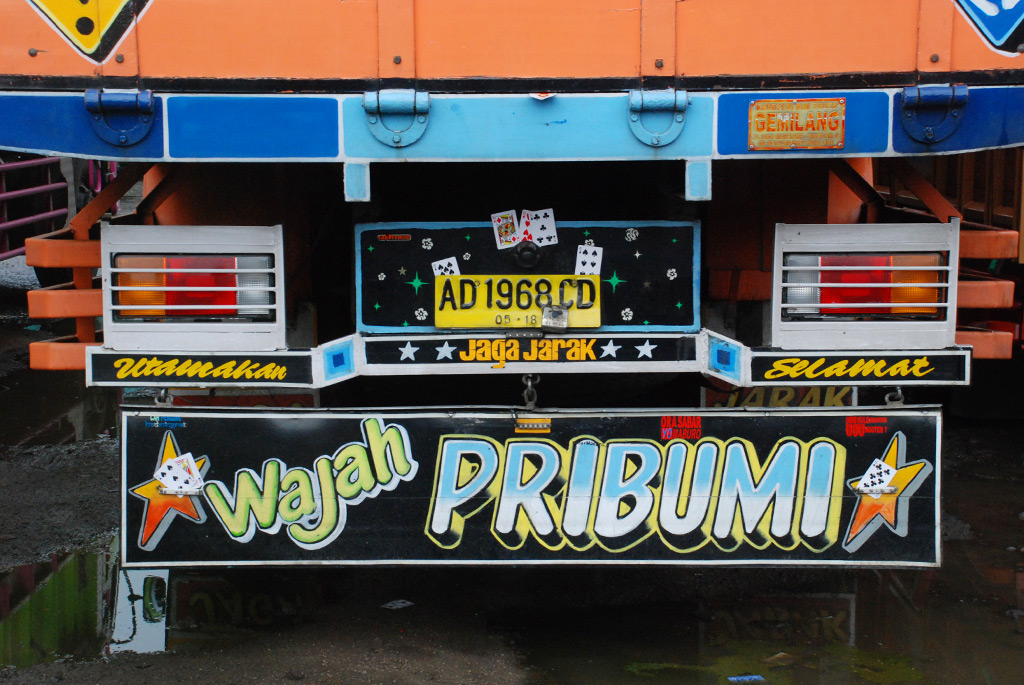
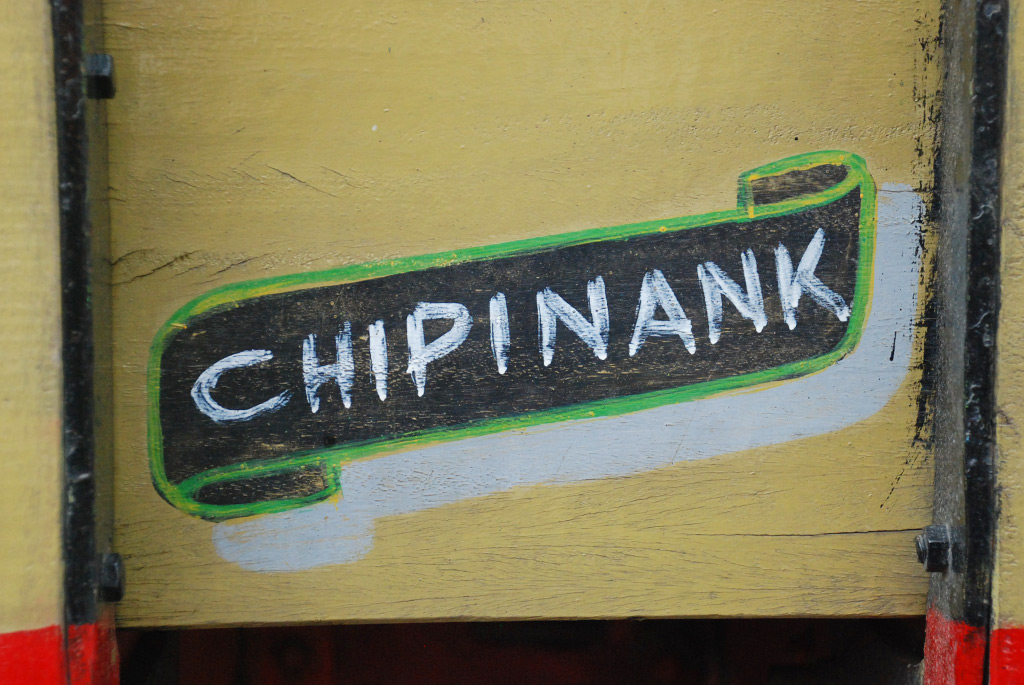
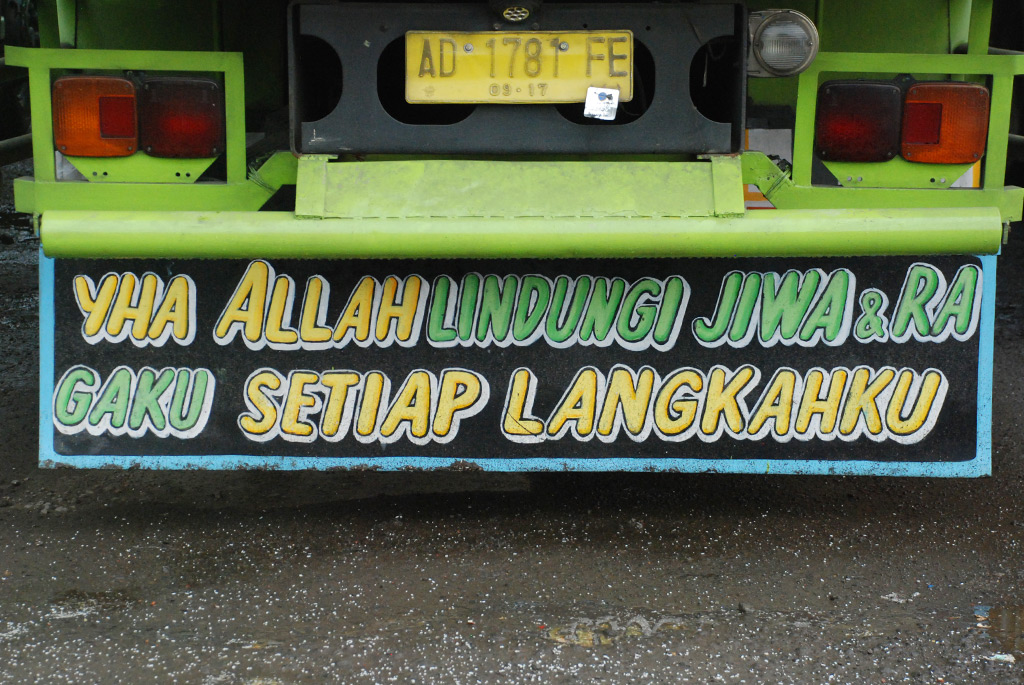
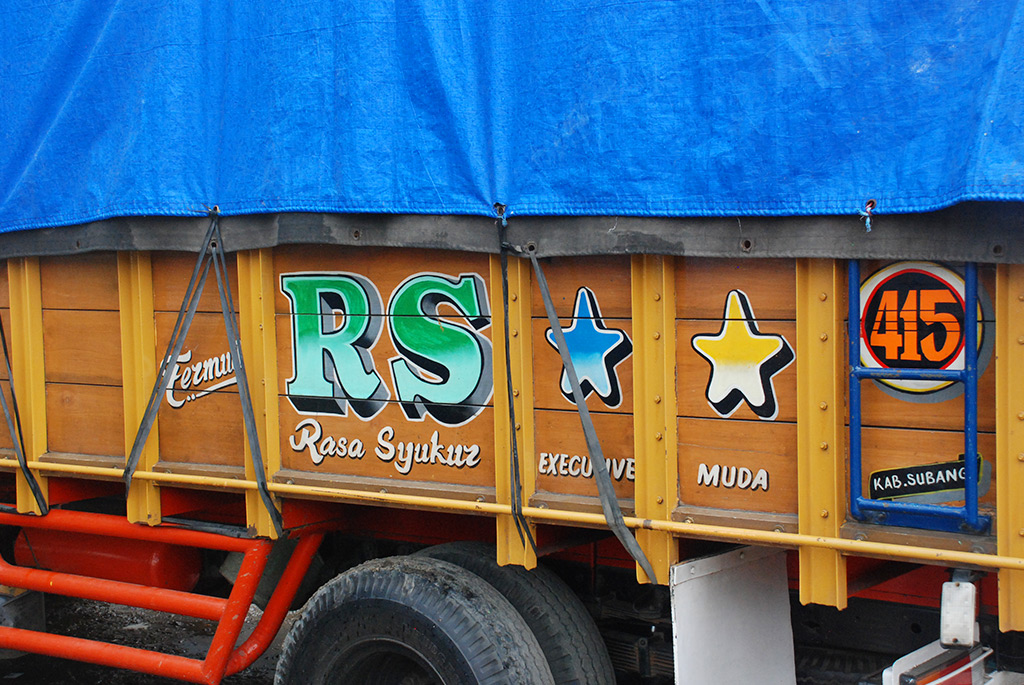
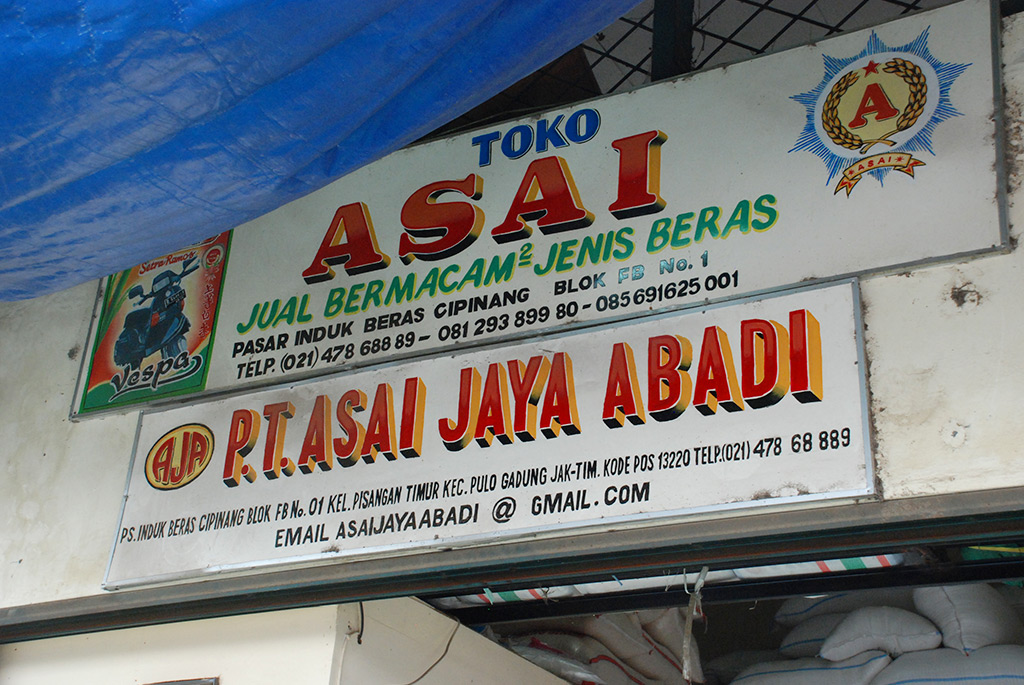
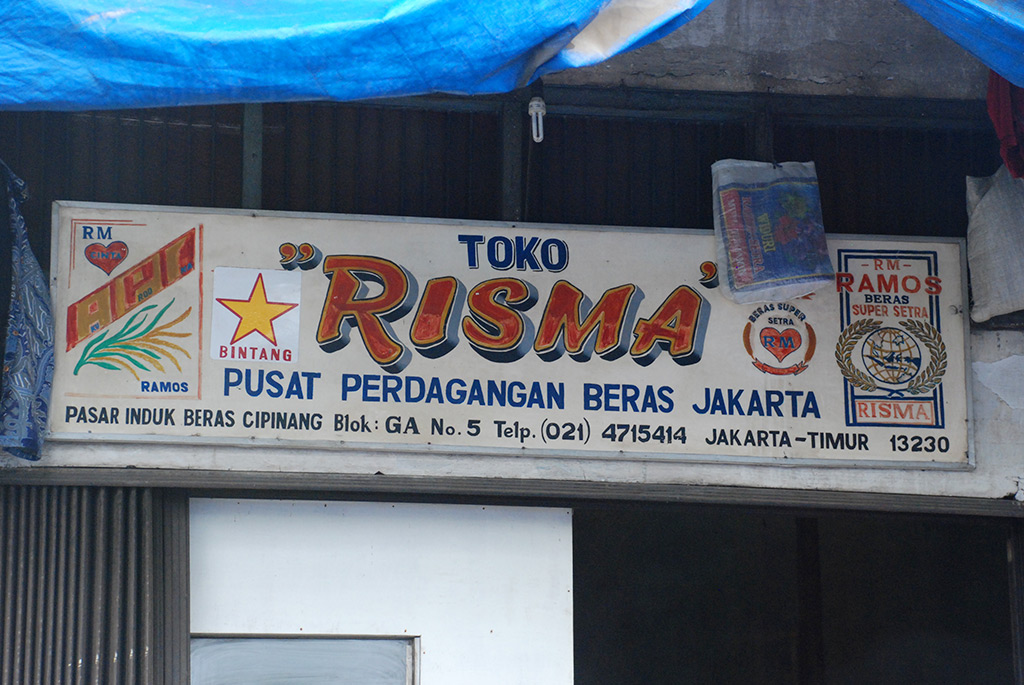
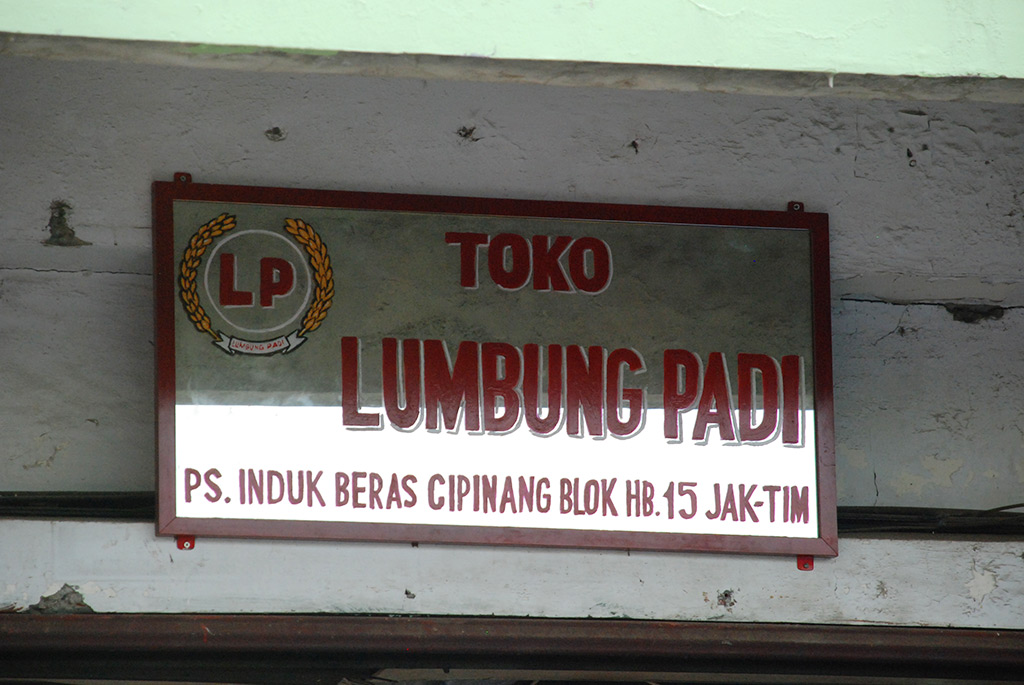
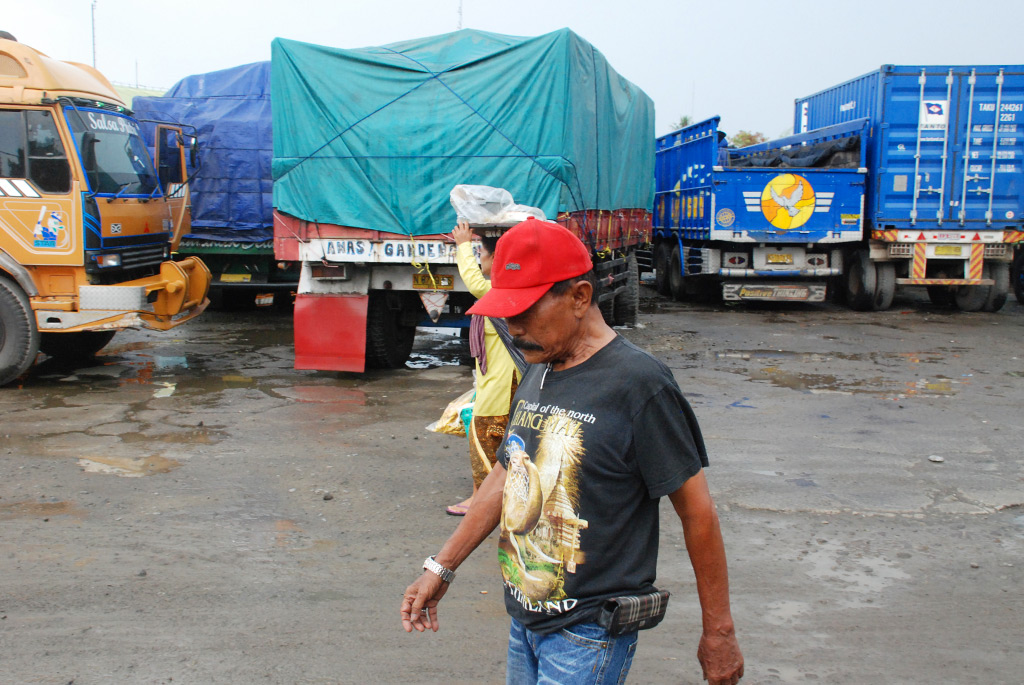
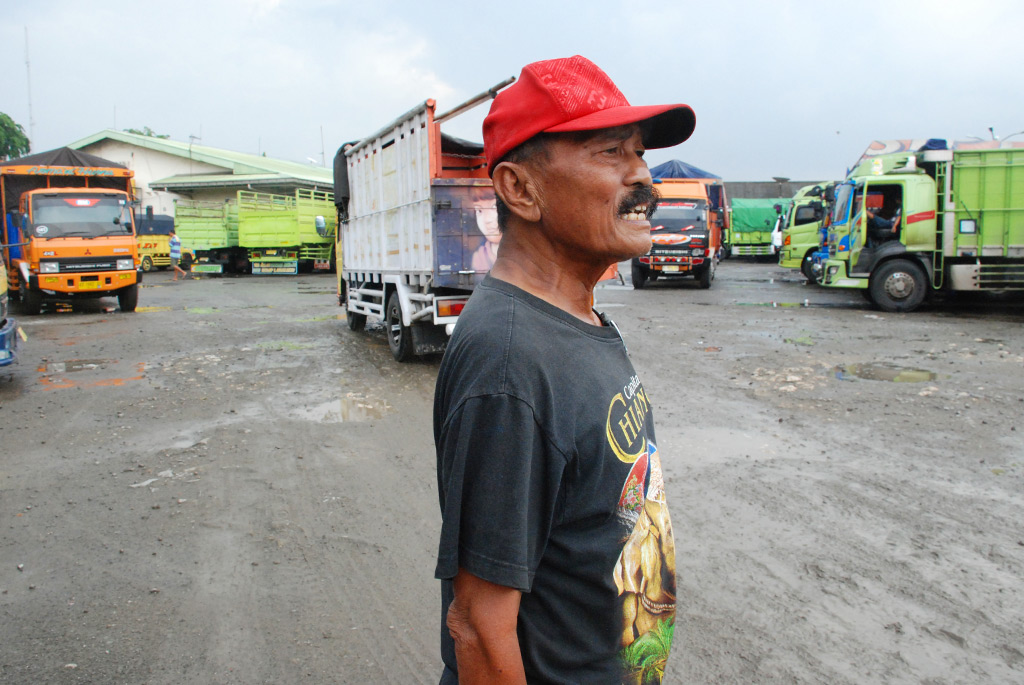
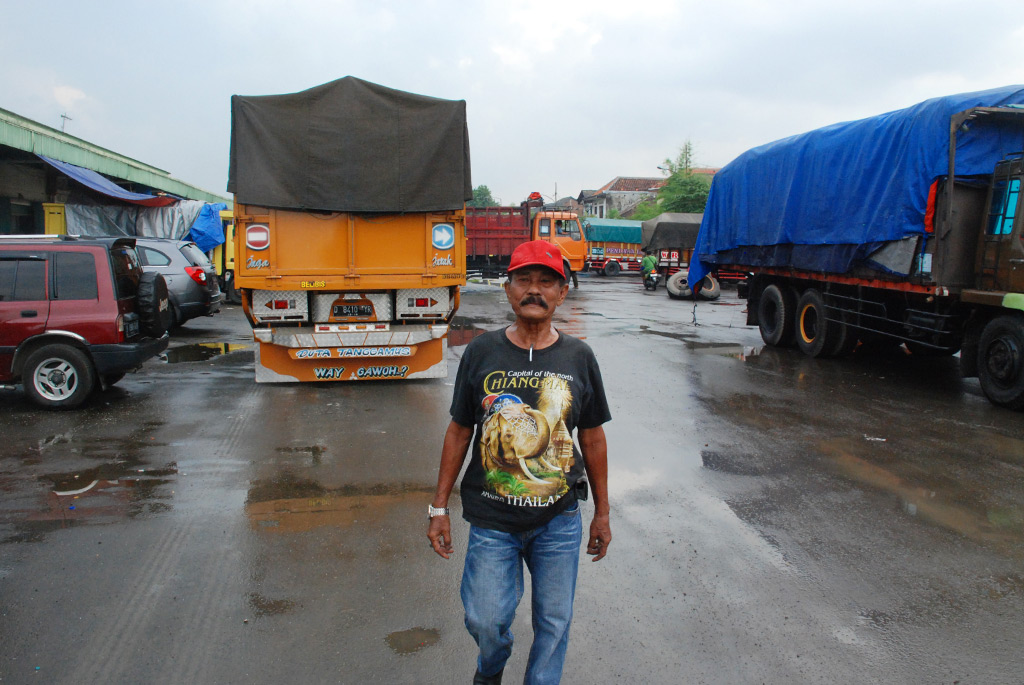
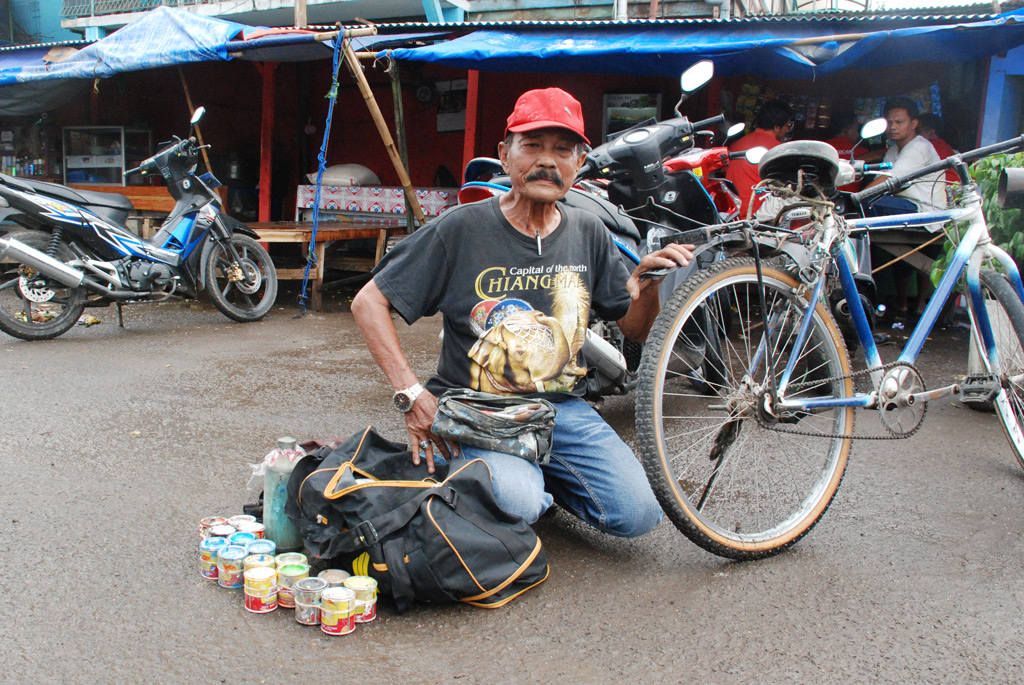
M
Could you tell us a little bit about your background and when did you learn to paint?
B
I first arrived in Jakarta in 1968. I explored the city before ending up at Pasar Induk Beras (Main Rice Market) in 1977. I introduced myself to the people who were bringing goods from outside of Jakarta and that is how I made friends here.
I learned painting on my own. I first painted for people outside of Jakarta – from Cirebon, to East Java, to East Sumatra – that is why everyone knows me. Time, of course, doesn’t stop. I taught my eldest son to paint as well, and he helps me, although being a graduate from a technical school, he does technical work during the weekdays.
M
So before you arrived to Jakarta, you didn’t have any experience in the arts?
B
Painting, no. Back then, people in Java worked as craftsmen such as making Batik. The thing is, though, over there people are divided into four castes, and I come from one of the lowest. Becoming part of another caste is impossible, that is why I decided to explore Jakarta and ultimately stay here. It wasn’t and isn’t like that in Jakarta.
I had a wife from East Java who recently passed away, 6 children, 3 passed away, and now grandchildren in Jakarta.
M
How did you begin painting in the first place?
B
I was asked to. Automobiles needs intonation and identities, so first I painted names and it went on from there.
M
Why were trucks being painted in the first place?
B
The government recommended that trucks should be personalized so they will be recognized easier. If something happened to a truck, people can identify it.
M
When did people start painting on trucks?
B
I believe around the early 1970s.
M
What sort of art inspires what is painted?
B
They are all by request. They were often popular films such as “Si Buta Dari Gua Hantu.” Some of the requests are so frequent that I could paint by memory.
M
What is the painting process like?
B
I try to do what the person requests, but being Javanese from Yogyakarta, I do not want to paint inappropriate words or images. In one instance, a person insisted on writing “Pancaroba” on his truck. [editors note: Pancaroba means the transition between seasons, but in this conversation, Mr. Buyung refers to Pancaroba as a “five incidents”]. I tried warning him, that it would bring a bad omen, but he wouldn’t listen. He went through 5 accidents, the last one killing him. Being a person from Yogyakarta, I am a little bit superstitious.
M
So there are subjects that you do not want to paint.
B
Yes, particularly words or images that depicts women in a profane manner. It’s not that I am afraid of women – we were born from a woman’s womb, we need to understand the struggle women must face. They carry us in their bodies for 9 months, bring us into this world, and raise us. Men do their deeds and leave.
I try not to do the work when people ask me to, although if they are forceful and I do it– they must bear the risks.
M
Such as?
B
Such as the Pancaroba story I mentioned earlier. There was another story, where a friend asked me to paint him a pitchfork. I don’t quite understand why he wanted it, and I didn’t know much about pitchforks, to be honest. As soon as he reached Tangerang he got into an accident… he didn’t survive.
M
You also have experience painting posters for movie theaters and logos for shops, correct?
B
Yes, most of the logos in this market [Pasar Induk Beras] were done by me.
M
What are the differences in your process creating trucks, posters, and logos?
B
When I was younger, with the help of my son I would be able to paint three trucks every day – front, back and both sides – now that I am old, I am already exhausted working on one.
Banners for movie theaters take a longer period of time to make. I need to create a series that look exactly the same, and when it rains I have to stop working.
M
As for shop logos?
B
I work on logos at home and when it is finished, I deliver it to the shopkeeper. Usually, they would give me a concept, and I work on it. Making logos is a very relaxing affair.
M
Are there artists or painters that inspired your work?
B
Yes. I love the work of Affandi. I want to be able to draw animals as well as he did, but unfortunately I cannot.
M
Have you ever considered delving in fine arts?
B
I don’t know. I am a layman, I only had limited schooling. I think my time has passed. My living children are married and have families, and my mind hasn’t been quite right either ever since my wife passed away. I’m not feeling hopeful at this moment.
M
Keep your spirits up. Who knows what your craft can lead to.
B
God willing.
M
What you do can be considered as street art. What do you think of other types of street art? Graffiti, for example?
B
My life is in Pasar Induk Beras, I do not know much about street art, to be honest. I would like to try it, but that isn’t my medium, mine is the truck.
M
What are the motifs that you often paint on trucks?
B
Popular films such as Si Buta Dari Goa Hantu, or Elvis Presley. I don’t draw them on the trucks, though. I draw on the carpets that covers the wheels.
M
At a workshop in Club Kembang, you collaborated with a truck painter from Pakistan. What do you think about what they painted?
B
We are very different, he is so much better than me (laughs).
M
You have painted for many years, how has truck painting develop?
B
There are only a few painters left. Now, people use spray paint and stickers to create the art on the trucks. I still use my oil paint and brushes. There are also not that many requests anymore.
M
What are your plans for the future?
B
I will keep painting til the end of my days.
Contact Mr. Iswarno (Buyung)
0812.1933.479 (telephone calls only)
Workshop:
Pasar Induk Beras Cipinang
Jakarta Timur








